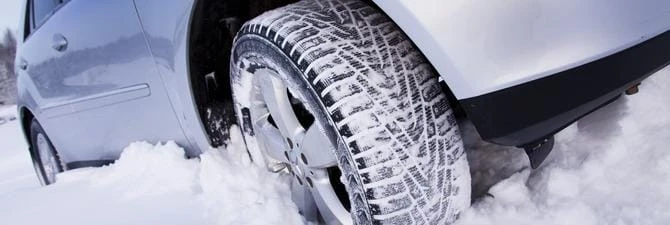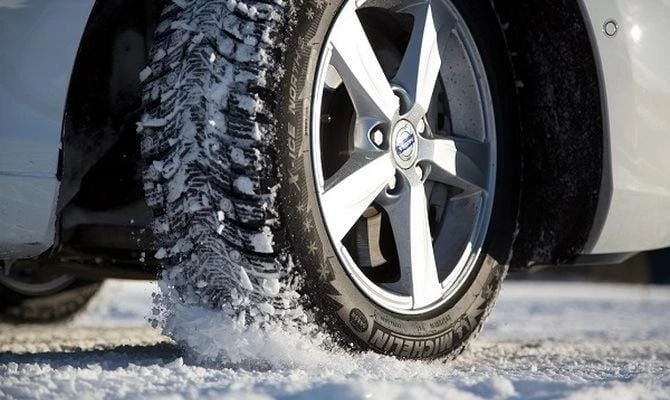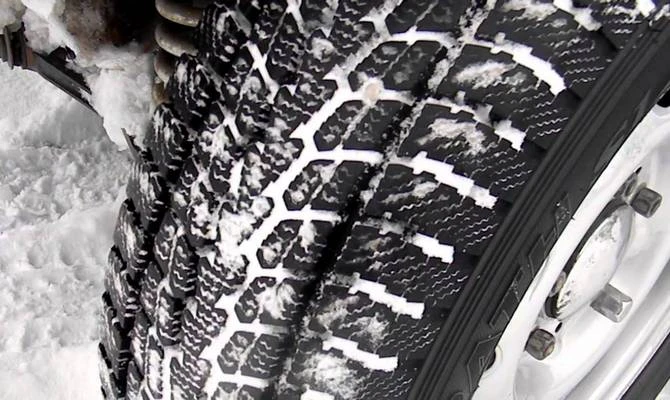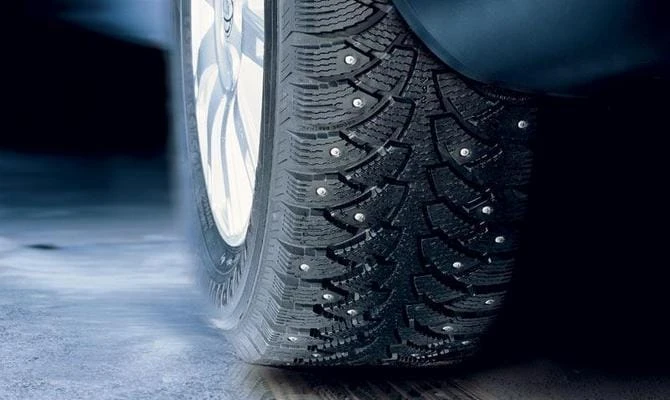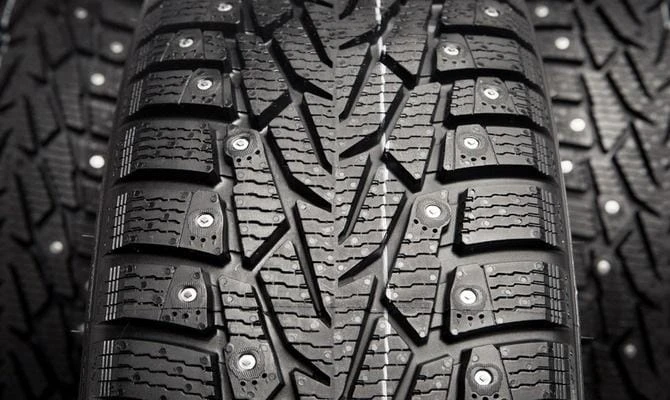Which winter tires are better to choose – Tips for beginners and experienced motorists!
Safety on the road in the winter season depends on many factors, the determining one of which is high-quality and reliable winter tires. In this article, we will understand the features and nuances of choosing one or another winter tire for a car.
1 Types of tires for the winter season – studded or friction?
It is better to choose tires long before the onset of cold weather and changes in road conditions. Firstly, during this period you can buy tires at a better price. Secondly, you will have time to evaluate and compare different tire models, choose the right manufacturer and the configuration that best suits your vehicle.
Car with winter tires
Today, there are several types of tires for driving in the winter season. Each of the options has both pros and cons, which we will analyze further. Almost all options for winter tires come down to two types – without studs and with studs. The first type of tires behaves better on asphalt with a minimum amount of snow or ice, the second type (friction) is recommended when driving on snowy roads and in off-road conditions.
Conventionally, there is a third type of winter tires – all-season tires that can be used in both summer and winter at universal temperatures. Good all-season tires are not produced by many manufacturers and are mainly designed for high-quality roads that are constantly cleared of snow and ice. Such tires are strictly not recommended for use during severe frosts, in addition, their properties deteriorate noticeably if there is snow or mud on the road.
Winter tires use sophisticated technology, but the main element of any studless tire is the tread. The type of protector can be divided into two types:
- Scandinavian type. Large spacing between tread elements and deeper sipes. Suitable for driving on snow or winter mud.
- European type. Diagonal patterning with a good drainage network of channels. More suitable for driving on wet and icy asphalt.
Non-studded tires for cars
The first type of tires has a low speed index; for different rubber manufacturers, it varies between 160-170 kilometers per hour. This type of tire is suitable for moderate and calm, even slow driving without sharp turns and acceleration. Among the popular models of winter tires with a Scandinavian tread type are Nokian Nordman RS, Bridgestone Blizzak VRX, Michelin X-Ice 3, Toyo Tires Gart G4, G5, Continental Conticross Viking.
The European version of the tires has a higher speed index, which for some manufacturers reaches 240 kilometers per hour, as well as better braking performance on wet and dry pavement, they are suitable, among other things, for those who drive aggressively even in winter. But they are also suitable for motorists with a calm style, who often move on snowless asphalt. Among the popular models of this type, the following models stand out: Dunlop Winter Sport, Pirelli Scorpion Ice, Nokian WR Series, Yokohama Drive V.
Among the advantages of frictional winter tires it should be noted:
- reliable grip parameters on wet and dry pavement;
- no noise when driving on paved roads without ice and snow;
- stable characteristics in different temperature ranges.
Regardless of the type of tread and chemical composition, non-studded winter tires are more suitable for motorists living in Europe and the European part in recent times, where winter is not distinguished by constancy and the presence of a large amount of snow on the roads. In addition, it is recommended to install such rubber if the car is equipped with additional safety systems such as ESP and ABS, they are able to compensate for some of the shortcomings of friction tires in certain driving situations.
3 Studded winter tires – key benefits
Winter tires with studded tread are designed for driving on permanently icy or snowy roads. The studs in the rubber are essential to increase traction on such roads, as they are capable of breaking up the ice crust. Such rubber is characterized by balance and a medium degree of rigidity, while tires of this type can also be used on other types of road surface. Among the disadvantages of studded tires, one can single out a high level of noise and a longer braking distance compared to Velcro.
Winter tires with studs
Among the popular and well-established models of studded tires are the following:
- Nokian Hakkapeliitta Suv 7,8,9;
- Continental IceContact;
- Michelin X-Ice North;
- Bridgestone Ice Cruiser;
- GoodYeear UltraGrip.
It is up to you to choose a studded wheel option for your car or not. It should be understood that the spikes are not a guarantee of safety on the road in the winter. On dry and wet pavement, these tires have reduced traction, longer stopping distances and an increased tendency to skid, they make noise and fall out. Some modern models of friction tires, especially those with a Scandinavian tread type, are not inferior to their studded counterparts even on an icy road.
If you move more in the city than outside it, it is better to use any type of friction winter tires. If you often have to go off-road in winter, buy special anti-skid chains that you can install and remove with your own hands in front of a difficult section of the road.
4 Two tires per axle – is it worth saving this way?
There is an opinion among motorists that for the winter season it will be enough to install winter tires only on the drive wheel axle. This is fundamentally wrong. The main danger of installing winter tires only on the drive wheels is uncontrolled skidding. Even with four winter wheels on a slippery road, when entering a turn, it can be very difficult to get the car out of a skid, and if a pair of summer tires are installed at the back or front, it will be almost impossible to do this, and the consequences can be very different.
Installing winter tires
As for the installation of tires of the same parameters and characteristics, but with a different tread pattern, this is allowed if the car has a monodrive. However, this state of affairs will make adjustments in the event of emergency braking on a snowy road – the car may be thrown into a skid or its braking distance will increase. On a four-wheel drive vehicle, all tires must be the same and with an identical tread pattern.
5 Does the choice of tread affect the overall performance of the rubber?
It should be understood that tires can perform different functions on certain road surfaces and in certain driving situations. If the car is driving on packed snow (not ice), then the tires should scoop the snow as efficiently as possible, literally biting into it, preventing slipping and improving traction. On slushy and muddy roads, the tire's ability to divert flow comes to the fore, providing maximum stability and resistance to skidding.
car protector
Thus, a tire with a single tread pattern cannot meet all the requirements of the road situation in both winter and summer seasons. Of course, many manufacturers try to make their tires as versatile as possible, but each model ends up with advantages in one or two road components. To choose the right rubber, it is enough to know how the protectors differ from each other. As described above, there are four types of tires for winter, which also differ in tread pattern. Accordingly, looking at the tread, we can conclude which tire is in front of you and whether it is worth buying it for your car.
